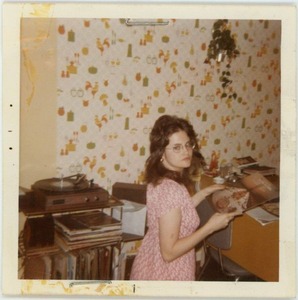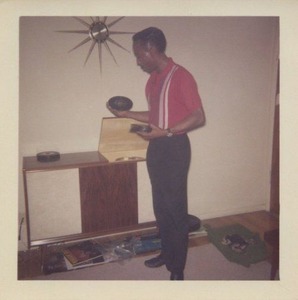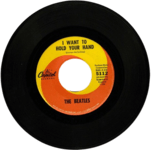You are presented with a glossy black disc, around twice the size of your uncomfortably outstretched hands. Moving it around in the light causes little divots to appear, but when you run your fingers across its face, they slide off, not being caught on anything. The 12-inch vinyl record you are holding is no technological marvel by today's standards; there are no screens, buttons, advanced algorithms, nor any tech that can be functioned on its own without the aid of another machine, but that is where this archaic artifact holds its charm and meaning. Its plain, simple, unassuming appearance holds much more meaning than any hi-tech supercomputer you can access in the modern age.

Contrary to the modern-day view of the record being old tech, its eras of evolution were marked by several scientific advancements. The vinyl record is a successor of the gramophone, which was an improved version of Thomas Edison’s phonograph, a cardboard cylinder wrapped in tinfoil that could record and replay sound. The gramophone took Edison’s idea and transformed the cylinder shape into the more recognizable flat disc, which amplified sound through a motor and needle. The change was revolutionary at the time because it impacted the everyman’s ability to listen to music. Its small and easy-to-use design allowed for the mass-produced object to be used by anyone when previously the only way to listen to music was live. Further developments impacted the music industry itself, such as the creation of 33 ½ rpm record players, which “allowed people to play music for longer durations, heralding the arrival of the album as we know it today” (“The History of Record Players and Turntables”). The record you hold was an integral part of music history, paving the way for modern-day music listening as we know it. Yet, it has seemingly been pushed to the sidelines due to the prevalence of modern-day audio streaming services made available through smartphones.
Due to the popularization of streaming services and phones that can download digital files, finding and listening to music is now considerably easier. Technology has even progressed to the point where you do not even need to find anything yourself; algorithms can automatically present new music based on your preferences –no extra effort required. At this point, what purpose does the vinyl record play? Compared to the digital files you can just download on your phone, they seem considerably worse. They are far too large to take anywhere, far more limited regarding song storage, and much more fragile. Once at the forefront of innovation in bringing accessibility and convenience to the listener, the world has moved past the vinyl record. Today, they are nothing but a big inconvenience to take care of. Why do you choose to own a vinyl record in the modern-day, then?
The way that people treat digital files is similar to that of people who collect physical files. Andrew Dillon argues they are barely distinguishable from each other, stating that “digital possessions serve very similar purposes to material ones in terms of representing self-identity, offering personal value, and enabling a sense of control over the world” (270). While that may be true, and though he may cite the example that some teenagers “almost obsessively backed up their possessions for fear of losing them, indicating a high level of value placed on such objects,” it still feels like there is a large discrepancy between them. At the end of the day, if you ever lost your file, you could just as quickly download it again and regain what was lost; you didn’t have to do much to get it in the first place.
A major part of the collecting process is ‘the hunt.’ The act of finding your object, rather than just being presented with it, is often the most enjoyable part when collecting. All items, be they physical or digital, can hold value to someone. However, there is something very grounding, about taking out an album you spent days searching for and placing it down on a turntable to listen to rather than just pulling it up on your phone immediately. Despite the considerable effort and lack of convenience, acquiring a record does hold its merits. According to William McIntosh and Brandon Schmeichel, “the desire to acquire an object requires an external motivation, but collectors often report that hunting for the object is its own reward” (91). A connection is formed during the hunt for an object that digital music cannot achieve because there is often no real story behind the acquisition. There is a sudden desire to listen to it, and then instant gratification is immediately achieved. There is a hollowness in whatever you choose to listen to with blind convenience in mind; its provenance is non-existent.

Finally, you decide to put your record down on the turntable and let the needle drop. It is an old record, and you can hear the imperfect crackling from the dust within its grooves when the music plays. You think of the work you put in to acquire what you are now listening to. Years ago, someone else also loved this album enough to search for it, and in the future, someone else will, too. All three of you are connected by this archaic piece of history. It has no algorithms, no buttons, no screens, but through its physical nature, it effectively time travels. The digital version of the same album you own –while more advanced and more convenient– is localized only to you. Your collection stays with you, as does the story of your affection for it. There is no physical proof to show how much you loved the music, it is instead lost to time due to your preference for convenience.



